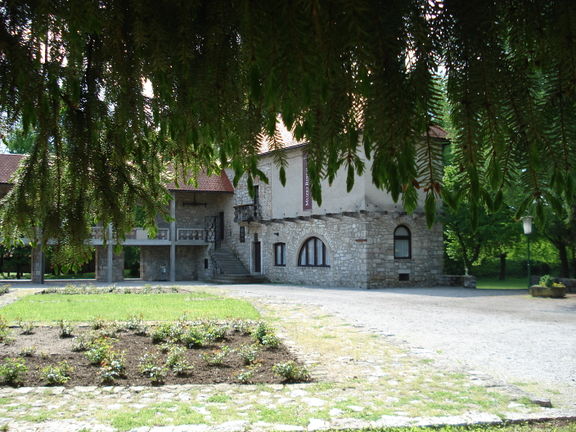Difference between revisions of "Ribnica Castle"
Ivan Pirnat (talk | contribs) m |
Ivan Pirnat (talk | contribs) m |
||
| Line 25: | Line 25: | ||
==History of the Castle== | ==History of the Castle== | ||
Ribnica as feudal land of the Aquileian Patriarchate was first mentioned in 11th century. Written sources testify [[Ribnica Castle]] two centuries later as Reuienz. Around 1220 the castle was owned by the Auerspergs that got the castle from Žovnek family as dowry. In the middle of the 13th century Ortenburg family divided the land among themselves. In 15th century Counts of Celje got the castle back since they derive from Žovnek family. In dynastic struggles with Habsburgs they lost and Last Count of Celje Ulrik II. was murdered in 1456, so all their possessions got Habsburg family. Many owners changed from 16th to 19th century, Lamberger, Moscon, Gall, Khisel families and the Counts of Kobenzl. Born in [[Ribnica Castle]] was also Slovene famous renaissance composer [[Jacobus Gallus Carniolus]]. | Ribnica as feudal land of the Aquileian Patriarchate was first mentioned in 11th century. Written sources testify [[Ribnica Castle]] two centuries later as Reuienz. Around 1220 the castle was owned by the Auerspergs that got the castle from Žovnek family as dowry. In the middle of the 13th century Ortenburg family divided the land among themselves. In 15th century Counts of Celje got the castle back since they derive from Žovnek family. In dynastic struggles with Habsburgs they lost and Last Count of Celje Ulrik II. was murdered in 1456, so all their possessions got Habsburg family. Many owners changed from 16th to 19th century, Lamberger, Moscon, Gall, Khisel families and the Counts of Kobenzl. Born in [[Ribnica Castle]] was also Slovene famous renaissance composer [[Jacobus Gallus Carniolus]]. | ||
| − | Eventually in the early 19th century the property passed to the Rudež family, its last-known owners. It was sold to the Yugoslav Government in 1937 for military base. During Second world war sad story of many castles in this region happen. It was burned down after was used as hospital for partisans in 1944 who had to flee Germans. Castle had an inner courtyard and two residences before that, after burning only the two defence towers and the passage which link them as well as the foundations of the old castle remained. Renovation of what was left started after the war but lack of funds resulted to ruin again. | + | Eventually in the early 19th century the property passed to the Rudež family, its last-known owners. It was sold to the Yugoslav Government in 1937 for military base. During Second world war sad story of many castles in this region happen. It was burned down after was used as hospital for partisans in 1944 who had to flee Germans. Castle had an inner courtyard and two residences before that, after burning only the two defence towers and the passage which link them as well as the foundations of the old castle remained. Renovation of what was left started after the war, but lack of funds resulted castle to ruin again. Mikl House Museum was crucial for renovation and maintaining the castle as we see it today. |
}} | }} | ||
Revision as of 22:49, 18 February 2010



